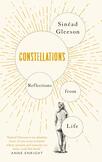Review: The holy challenge of living in bodies that are both material and mystical
A body is the source of pleasure, pain and decomposition. A woman’s body can be both a political battleground and a vessel for new life. Bodies, in all their complexity, are the subject of the Irish writer Sinead Gleeson’s new collection of essays, Constellations, in which she examines the treatment and experiences of her own body as it has withstood life-threatening illness and injury since she was a young teenager. “The body is an afterthought,” she writes. “We don’t stop to think of how the heart beats its steady rhythm; or watch our metatarsals fan out with every step.”
Gleeson’s collection opens with an intriguing essay that sets the stage for her reflections on both the body’s materiality and its mysticism. “The synovial fluid in my left hip began to evaporate like rain,” she writes of the year she turned 13. “The bones ground together, literally turning to dust.” She missed school and had biopsies, surgery and an eventual diagnosis of monoarticular arthritis. The essay hops from the biblical story of Jacob wrestling with an angel to Ireland’s Catholicsm before various abuses were exposed to a school trip to the hills of Lourdes, where Gleeson becomes her school’s chance at a miracle—her healing the prayer her teachers and classmates place at the Virgin’s feet. “Our bodies propel us through life,” she concludes, “with their own holiness.”
Sinead Gleeson's body shapes—molded by leukemia, a hip replacement, complicated childbirths—provide the most fully realized essays in Constellations.
It is this very holiness that serves as the inspiration for the collection. “Without those experiences,” she writes of her various pains and surgeries, “I would not be a person who picks up those shards and attempts to reshape them on the page.” Her body’s shapes—molded by aggressive leukemia, a hip replacement, complicated childbirths—provide the most memorable and fully realized essays in Constellations. She finds particular interest in women’s bodies, which have long been a locus of political controversy in Ireland. (Gleeson includes a thought-provoking essay about the Irish referendum in 2018 to legalize access to abortion.)
Gleeson’s own constellations are the women writers and artists who made their bodies into their subjects, including Frida Kahlo, Lucy Grealy, Jo Spence and the author’s Aunt Terry. Her engagement with the subjects of some essays merely flits across the surface without really shedding new light on medical, cultural and political sexism. This book, however, is a fascinating perspective from a writer who has long been a patient and who marvels at the miracle of her human body. Look at “all the pieces of the self,” she writes, “there is a rearrangement: making wounds the source of inspiration, not the end of it.”
This article also appeared in print, under the headline “Heavenly Bodies,” in the April 2021, issue.










